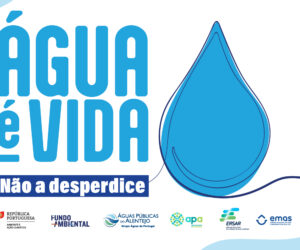 Increasing the daily consumption of fruit and vegetables in children of preschool age and in the 1st cycle of basic education is the main objective of the challenge “Fruit Heroes” promoted by the Portuguese Association Against Childhood Obesity (APCOI).
Increasing the daily consumption of fruit and vegetables in children of preschool age and in the 1st cycle of basic education is the main objective of the challenge “Fruit Heroes” promoted by the Portuguese Association Against Childhood Obesity (APCOI).
Inequalities in free access to fruit in schools in Portugal. New edition starts in 1.481 establishments in all regions of Portugal (continent and archipelagos).
Non-Continent, Beja (73,1%) is the last district in daily consumption of fruits and vegetables at school, third to last (75,8%) increasingly healthier school lunch boxes and the 12th (25,4%) in free access to fruit at school.
Daily consumption of fruits and vegetables at school
During the five weeks of intervention, it is estimated that the 14 953 children under analysis have consumed, at least, 635 thousand servings of fruit or vegetables. More than half of children (52,8%) who participated in the 13th edition of the 'Fruit Heroes' challenge’ tried some fruit or vegetables for the first time.
Nationally, an increase in 12,9% of children who consumed fruits and/or vegetables daily at school, between the first and last week of the intervention.
The three districts that recorded the highest percentages of children consuming fruit and vegetables daily at the end of the intervention were Braga (97,1%), Coimbra (91,7%) and Bragança (91,5%). The districts of Porto followed (90,8%), Azores (90,5%), Santarém (89,8%), Aveiro (89,5%), Évora (88,5%), Madeira (87,2%), Lisbon (86,3%), Setúbal (86,0%), Lighthouse (86,0%), Viana do Castelo (85,8%), Viseu (85,4%), Leiria (84,7%), Portalegre (81,1%), Watch (80,2%), withe Castle (77,2%), Vila Real (76,0%) and Beja (73,1%).
Beyond the fruit: increasingly healthier school lunch boxes
Nationally, between the first and last week of the intervention, there was an increase 22,6% of children bringing more nutritious foods in their lunch boxes every day to eat at school.
At the regional level, Viana do Castelo (88,2%), Lisbon (87,0%) and Porto (86,3%) were the regions with the highest percentages of children consuming healthy snacks, at the end of the intervention. The regions of Coimbra followed (85,3%), Évora (84,8%), Braga (84,7%), Lighthouse (84,4%), withe Castle (83,4%), Leiria (83,0%), Azores (82,6%), Bragança (81,4%), Santarém (80,0%), Portalegre (79,4%), Watch (79,3%), Setúbal (79,3%), Beja (75,8%), Vila Real (75,0%) e Viseu (70,8%).
Inequalities in free access to fruit at school
Nationally, according to information obtained by teachers, 70,1% of participating children had access to free fruit and vegetables at school, through European and/or national funds (European School Fruit Scheme and local institutions, respectively).
The data collected shows that the regions with the highest percentages of free access to fruit at school were Braga (97,6%), Leiria (93,8%) and Coimbra (90,7%). The districts of Bragança followed (90,4%), Santarém (87,8%), Madeira (86,4%), Viseu (82,3%), Port (79,6%), Lisbon (74,5%), Aveiro (70,1%), Lighthouse (68,0%), Setúbal (62,8%), Viana do Castelo (56,9%), Azores (50,7%), Beja (25,4%), Évora (22,8%), withe Castle (19,5%), Vila Real (15,8%) and Portalegre (15,6%). Guarda was the only district that reported not having used resources to access free fruit.
https://public.tableau.com/app/profile/enviheb/viz/HerisdaFruta2024/Lanchessaudveis


























